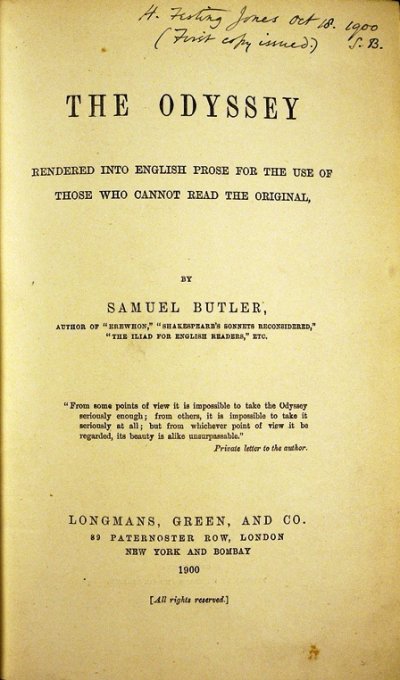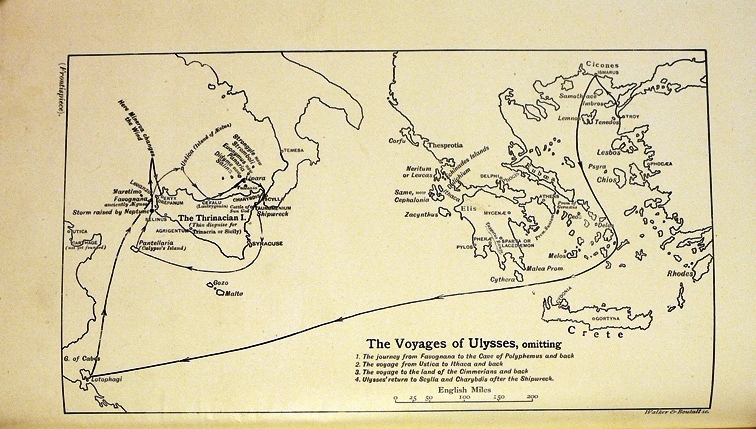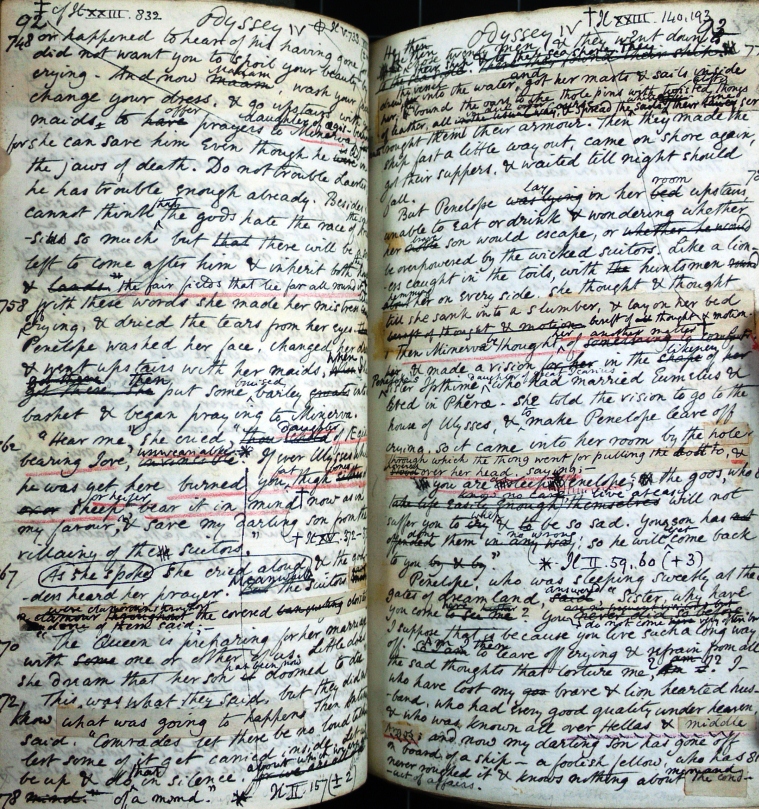The Odyssey (1900)

First edition title page (BII ODY 1900.1)
The Odyssey follows on from the Iliad, narrating the tale of Odysseus (Ulysses, in Roman myth) on his extended journey home after the fall of Troy. In the late 1880s Butler began work on a musical composition based on the story (Ulysses, written with Henry Festing Jones and published in 1904), and he reread the Odyssey then, in the original Greek, to refresh his memory. Doubts about the poem’s authorship immediately surfaced in his mind, and he began translating the poem into English prose so that he might get closer to the heart of the riddle. He published his conclusions in The Authoress of the Odyssey (1897) – a controversial book which he hoped would entice a publisher to take on his translations of the Homeric poems. After numerous rejections, Longmans agreed to publish the Iliad (1898) and the Odyssey (1900), and so the books came out “backwards”, having been written in the reverse order to which they were published.

Map of 'The Voyages of Ulysses' - frontispiece to first edition

Pages from the MS of Butler's translation (II/3/4)
Butler took delight in the very domestic and mundane aspects of the Odyssey: ‘Nothing can well be more franchement bourgeois & unheroic’, he wrote to his sister May, calling Ulysses a ‘servant’s hall hero’. His approach annoyed many Classical scholars, but the value of his translation in bringing the poem to life for English readers has certainly increased over time. Butler’s is said to be one of only two translations James Joyce used in writing his great 20th-century epic Ulysses (1922).